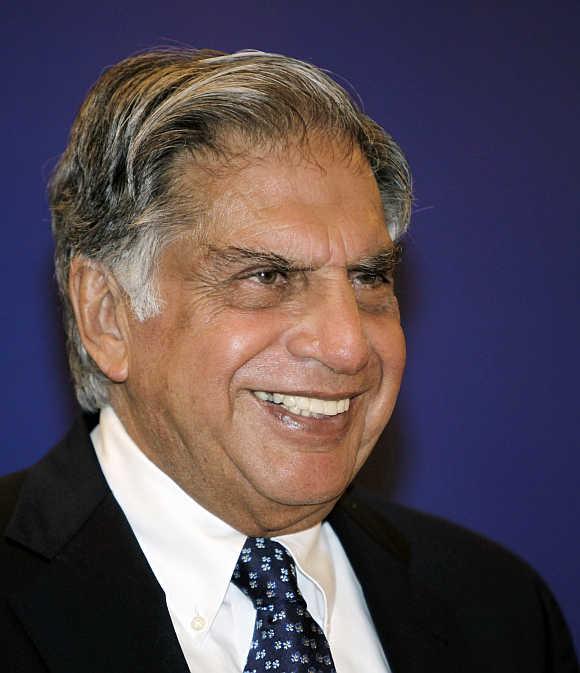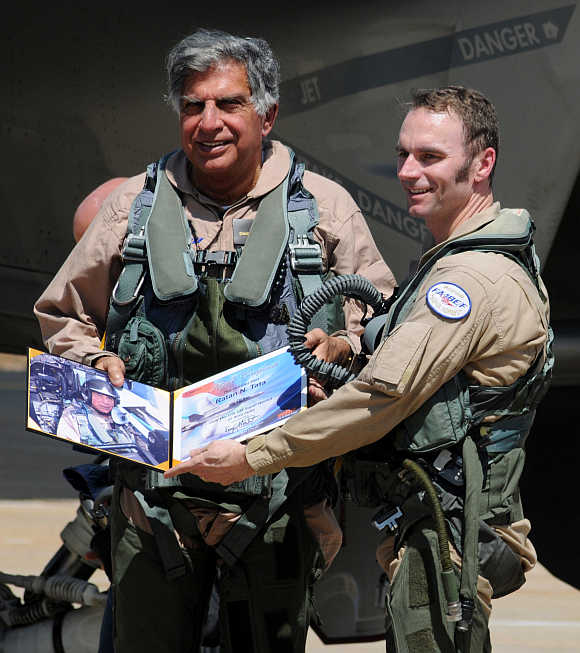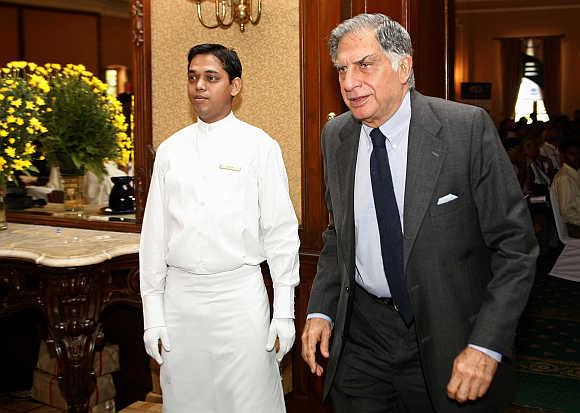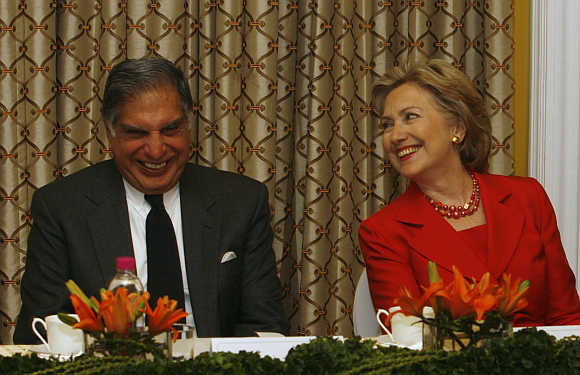
His crisis managers took the team to a few areas in the plant where workers had put up huge placards saying, "Jab tak suraj chand rahega, Russi Mody tera naam rahega".
The journalists were encouraged to speak to some of these workers, who all said they would support Mody till their last breath. Predictably, the next day's headlines in a few newspapers read: "Workers throw their weight behind Mody".
...

It was an obvious naivety on the media's part, but the stage-managed show of workers' support for him was also a reflection of the desperation of a man who wanted to retain his throne somehow.
In retrospect, it reflected Mody's realisation that he had been clearly outmanoeuvred by Tata whom he had once considered too naive to lead the group. The battle ended much later - in 2007, to be precise - when Mody, who once likened Tata to a "circus performer", admitted that the Tata Group chairman is a class act.
The words of praise came after he hosted Tata at his business suite in Taj Bengal in Kolkata.
...

The battle between Tata and the satraps in the Tata empire is well known. But the way Tata won the battle, and then transformed the group into a cohesive unit from a fractured entity - where individual company heads gave a damn to an overall group vision – deserves to be a case study.
As he retires this day next week, this has clearly been one of his biggest contributions to the Tata group.
The battle Tata faced was from four people who had run their companies for decades - Russi Mody at Tata Steel, Darbari Seth at Tata Chemicals, Ajit Kerkar at Indian Hotels and Nani Palkhivala at ACC.
...

It was obvious all these gentlemen believed they were more deserving than him to head the group. The attacks started in 1981 when J R D Tata stepped down as chairman from Tata Industries, naming Ratan his successor.
Though J R D continued to be group chairman, everyone knew he was the chosen one - something that was unacceptable to all the four.
J R D's benevolent leadership style didn't help because the satraps torpedoed a strategic plan drawn up by Ratan in 1983 for the group - many say the blueprint included mergers and acquisitions, how to harness group synergy and getting into new-age businesses. It also included a detailed plan to improve financial controls in a group that had started seeing a fair bit of financial misappropriation.
...

Taking over from J R D as group chairman in 1991 didn't improve the situation as the satraps continued to refuse to toe the line of a group vision. And then came the masterstroke - the Tata Sons board gave full support to his proposal for enforcing a rule that set 75 as the retirement age for all Tata directors.
While this helped the exit of Seth (his son also quit as managing director of Tata Chemicals), ill-health hastened Palkhivala's departure. Ajit Kerkar, who ceased to be the executive chairman of Indian Hotels when he turned 65, was of course turfed out for different reasons.
But Mody was made of sterner stuff and publicly termed it a "black resolution framed with Machiavellian intent to get him out, since he turned 75 in January 1993".
...

He had also openly defied Tata by issuing a circular promoting two of his six executive directors, Aditya Kashyap and Ishaat Husein, as joint managing director and deputy managing director, respectively.
The promotees were the youngest of the six Tisco executive directors. Though Mody cancelled the order a year later in the face of strong opposition from J R D and to buy peace with Ratan so that he can stay on, it was too late in the day.
Three months after his due retirement date, Mody exited the group. His first mission accomplished, Tata's next task was to make sure that the group doesn't go back to a sum of individual fiefdoms. He then focused on brand Tata - a group logo that belonged to Tata Sons.
...

All group companies were required to sign brand equity and business promotion agreements with Tata Sons before they could use the brand name. Also, when he took over, the Tata family had neither financial nor managerial control over many group companies.
That has changed with Tata Sons' holding in most group companies now around 26 per cent or more. It made sure that the Tata Sons chairman would be the ultimate boss.
Tata has, thus, made sure that his successor, Cyrus Mistry, isn't likely to be battling cliques and fiefdoms within the group as he has meticulously dumped the earlier corporate commonwealth model, which forced him to lose a lot of time in fighting internal battles. The new Tata group boss would have much to thank his predecessor for.